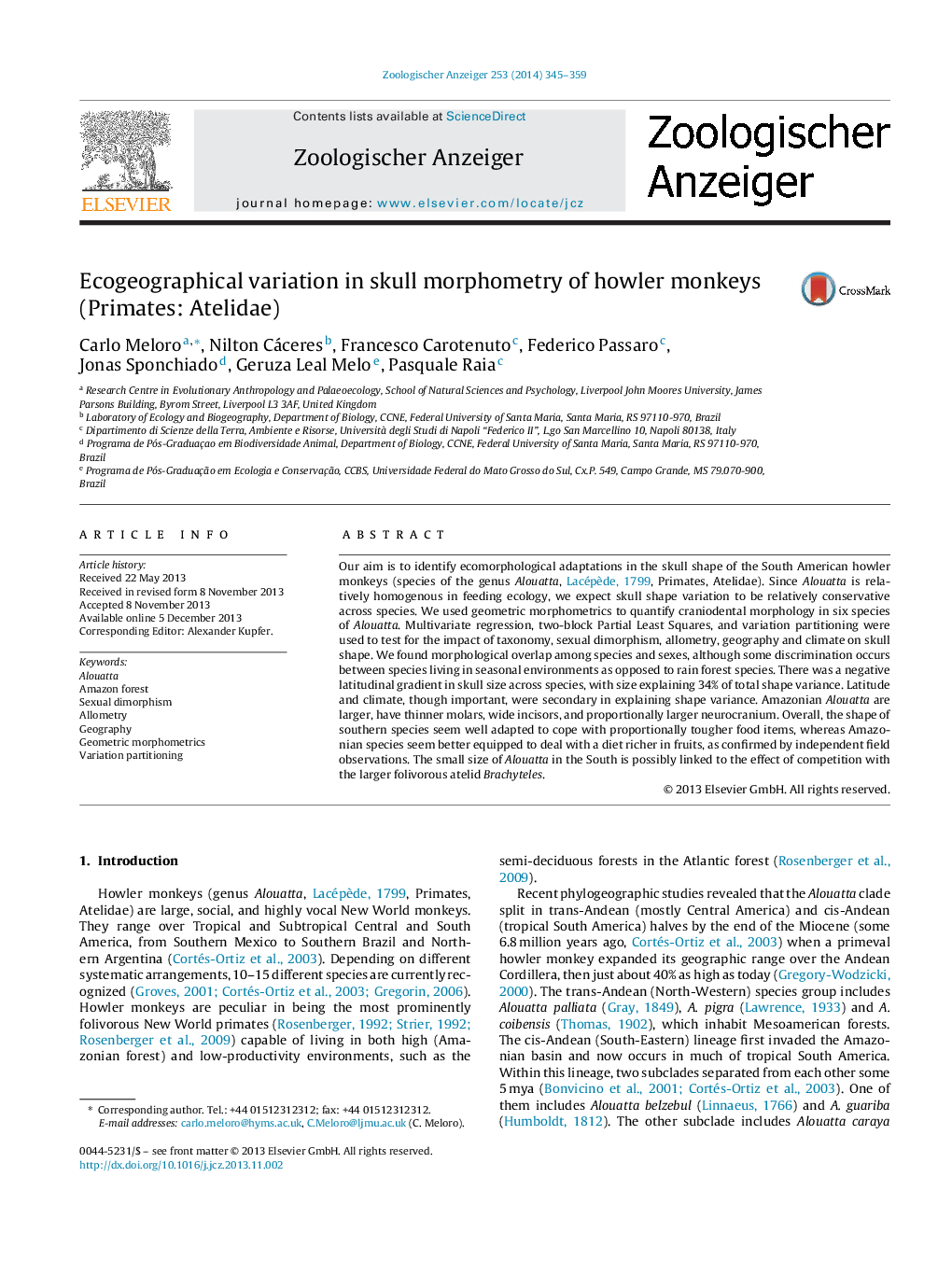| Article ID | Journal | Published Year | Pages | File Type |
|---|---|---|---|---|
| 2790615 | Zoologischer Anzeiger - A Journal of Comparative Zoology | 2014 | 15 Pages |
Our aim is to identify ecomorphological adaptations in the skull shape of the South American howler monkeys (species of the genus Alouatta, Lacépède, 1799, Primates, Atelidae). Since Alouatta is relatively homogenous in feeding ecology, we expect skull shape variation to be relatively conservative across species. We used geometric morphometrics to quantify craniodental morphology in six species of Alouatta. Multivariate regression, two-block Partial Least Squares, and variation partitioning were used to test for the impact of taxonomy, sexual dimorphism, allometry, geography and climate on skull shape. We found morphological overlap among species and sexes, although some discrimination occurs between species living in seasonal environments as opposed to rain forest species. There was a negative latitudinal gradient in skull size across species, with size explaining 34% of total shape variance. Latitude and climate, though important, were secondary in explaining shape variance. Amazonian Alouatta are larger, have thinner molars, wide incisors, and proportionally larger neurocranium. Overall, the shape of southern species seem well adapted to cope with proportionally tougher food items, whereas Amazonian species seem better equipped to deal with a diet richer in fruits, as confirmed by independent field observations. The small size of Alouatta in the South is possibly linked to the effect of competition with the larger folivorous atelid Brachyteles.
